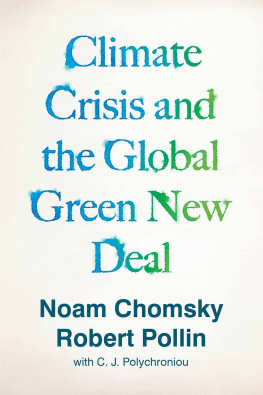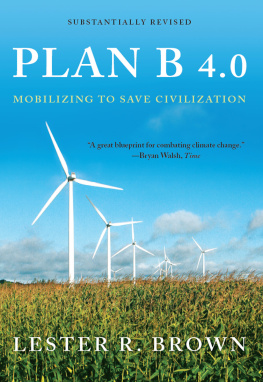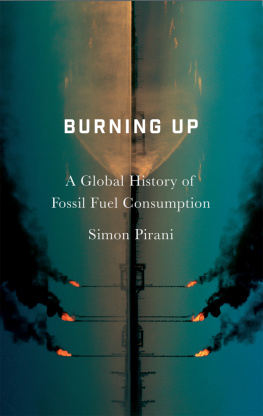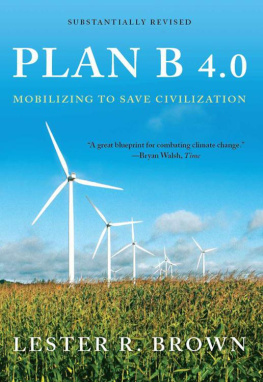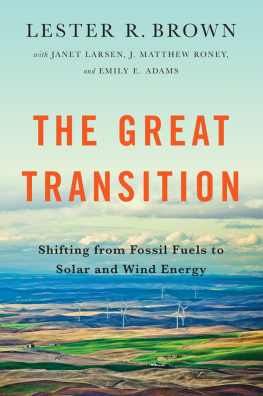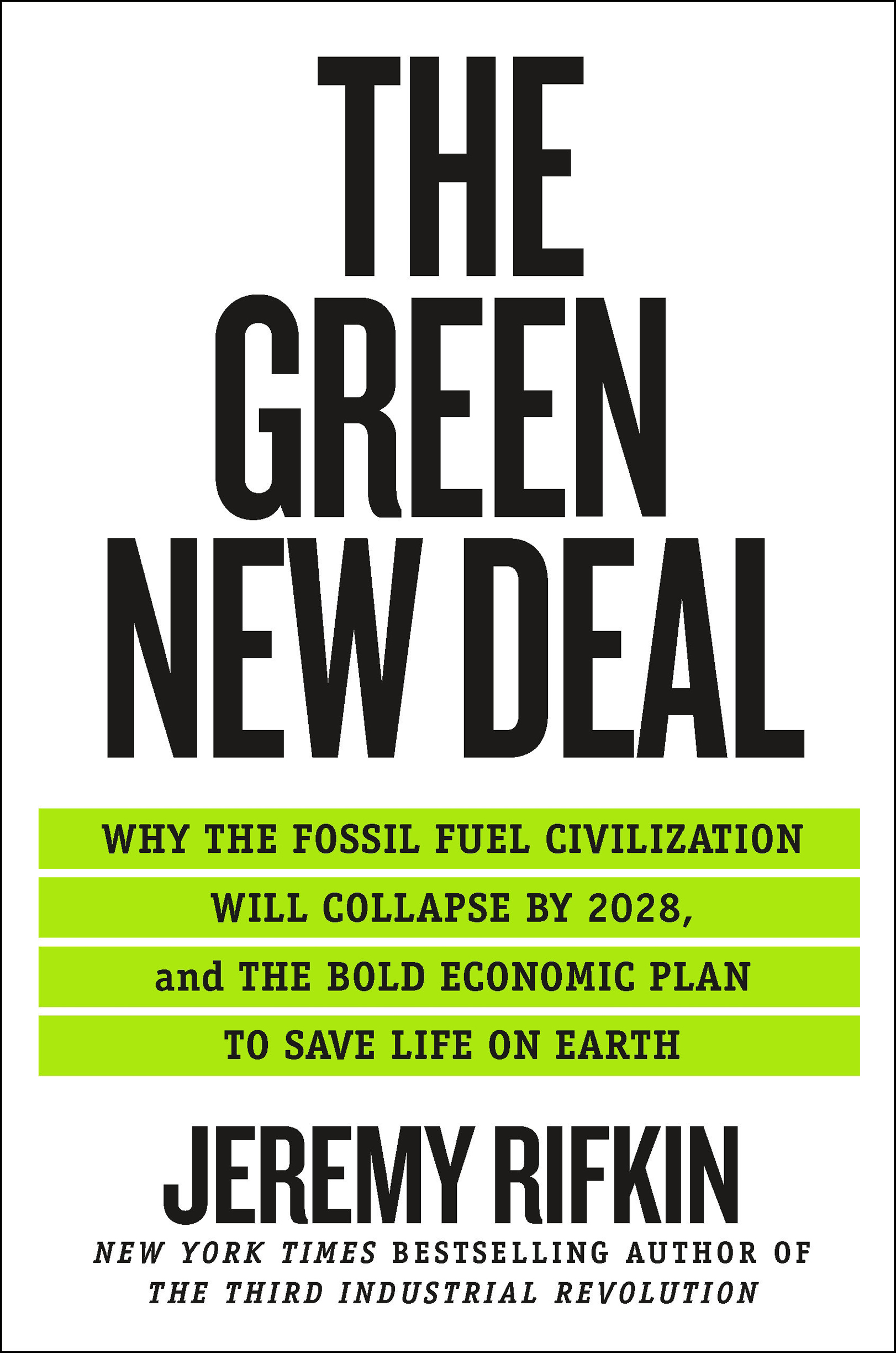The author and publisher have provided this e-book to you for your personal use only. You may not make this e-book publicly available in any way. Copyright infringement is against the law. If you believe the copy of this e-book you are reading infringes on the authors copyright, please notify the publisher at: us.macmillanusa.com/piracy.
We are facing a global emergency. Our scientists tell us that human-induced climate change brought on by the burning of fossil fuels has taken the human race and our fellow species into the sixth mass extinction event of life on Earth. Yet few people alive today are even aware of this emerging reality. The Intergovernmental Panel on Climate Change (IPCC), a scientific body of the United Nations, issued a dire warning in October 2018 that global warming emissions are accelerating and that we are on the verge of a series of escalating climatic events, imperiling life on the planet. The IPCC estimated that human activity has caused the temperature to rise 1C (Celsius) above preindustrial levels and predicted that if it crosses a threshold beyond 1.5C, it will unleash runaway feedback loops and a cascade of climate-change events that would decimate the Earths ecosystems. There would be no return to the kind of life we know today.
According to the famed Harvard biologist Edward O. Wilson, the extinction of species by human activity continues to accelerate, fast enough to eliminate more than half of all species by the end of this centuryby the time todays toddlers are senior citizens. This will require a transformation of our global economy, our society, and our very way of life without precedent in human history. In other words, the human race faces a razor-thin timeline for a radical reorientation of civilization.
The wakeup call came in the November 2018 national elections in the United States. A younger generation of congresspersons came to Washington and the House of Representatives passionately committed to a radical redirection of the American economy to address climate change while simultaneously creating new green businesses and employment that will ensure a more equitable distribution of the fruits of life. In November, young protesters from the Sunrise Movement stormed the halls of Congress and staged sit-ins in the offices of Nancy Pelosi, soon to become Speaker of the House of Representatives, and Steny Hoyer, the incoming majority leader of the House. The protesters were joined by Congresswoman-elect Alexandria Ocasio-Cortez.
Ocasio-Cortez called for the creation of a select committee in the incoming House tasked with the mission of creating a Green New Deal for America. The committee would set a one-year deadline to create an industrial plan to address climate change, decarbonize the economic infrastructure within ten years, create new business opportunities, and employ millions of disadvantaged workers in an emerging green economya bold aspirational proposal far beyond anything yet put forward by Americas cities, counties, and states. In the new term, congressional leadership equivocated on the proposal and ultimately established a Select Committee on the Climate Crisis with little power to act.
Meanwhile, on February 7, 2019, Ocasio-Cortez in the House and Ed Markey in the Senate introduced a Green New Deal resolution. One hundred and three members of Congress have already cosponsored it, including several of the major presidential contenders within the Democratic Party: Bernie Sanders, Kamala Harris, Cory Booker, Elizabeth Warren, and Kirsten Gillibrand. Democratic presidential hopefuls Julin Castro and Beto ORourke have also lent their support to a Green New Deal. So have former vice president Al Gore and three hundred state and local government officials from across the country, including South Bend mayor Pete Buttigieg, another Democratic presidential aspirant. There is no doubt that the Green New Deal has energized both progressive politicians and a younger generation of voters and will be a central theme of the 2020 national electoral campaigns.
Elected officials are sensing a sea change in public opinion that is quickly moving the issue of climate change from near obscurity to make it the central issue facing the American people. In blue and red states across America, individuals, families, workers, and businesses are becoming frightened about the violent changes in the weather and the deteriorating impact that climate change is having on ecosystems, causing widespread property damage, disruption of the business cycle, and loss of human life.
A December 2018 public opinion poll conducted by the Yale Program on Climate Change Communication and the George Mason University Center for Climate Change Communication found that 73 percent of respondents think global warming is happeningan increase of 10 percentage points since 2015and nearly half (46 percent) say they have experienced the effects of global warmingan increase of 15 percentage points since 2015. Moreover, 48 percent of Americans agree that people across the United States are being harmed by global warming right now, an increase of 16 percentage points since 2015. Most disquieting of all, an overwhelming majority of Americans believe that global warming is harming the worlds poor (67 percent), plant and animal species (74 percent), and future generations (75 percent).
The turnaround in the national mood comes in the aftermath of an escalating number of catastrophic climate events over the past decade. What makes climate change so terrifying is that it disrupts the Earths hydrosphere, which is essential to maintaining life. Earth is the watery planet. Our ecosystems have evolved over eons in consort with the water cycles that traverse the planet via the clouds. Heres the rub. For each one-degree rise in the temperature on Earth attributed to the increase of global warming emissions, the water-holding capacity of air increases by approximately 7 percent, leading to more concentrated precipitation in the clouds and the generation of more extreme water events: frigid winter temperatures and blockbuster snows; devastating spring floods; prolonged summer droughts and horrifying wildfires; and deadly category 3, 4, and 5 hurricanes, with untold loss of life and property and destruction of ecosystems.
Its no wonder, then, that a survey of American voters conducted just after the 2018 national elections asking their opinion on launching a Green New Deal plan for addressing climate change, akin to the New Deal mobilization in the 1930s that helped lift America out of the Great Depression, found widespread support across all political affiliations. The Green New Deal would generate 100% of the nations electricity from clean, renewable sources within the next 10 years; upgrade the nations energy grid, buildings, and transportation infrastructure; increase energy efficiency; invest in green technology research and development; and provide training for jobs in the new green economy. Ninety-two percent of Democrats supported the idea, including 93 percent of liberal Democrats and 90 percent of moderate-to-conservative Democrats. But 64 percent of Republicansincluding 75 percent of moderate-to-liberal Republicans and 57 percent of conservative Republicansalso backed the policy goals outlined in the Green New Deal. Eighty-eight percent of independents endorsed the policies as well.



